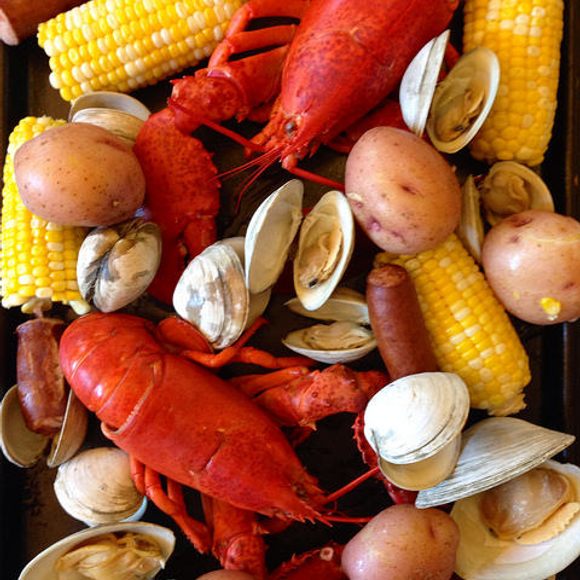Every summer, thousands of people descend upon the New England coastline for the age-old tradition of digging a giant hole, lighting a fire over hot rocks, covering it with seaweed, and then laying food over it. In other words, a clambake.
Pit-oven cooking has been a been tried-and-true culinary technique for centuries―in fact, it used to be the way to cook large quantities of food. For thousands of years, people dug massive holes in the sand and lined the holes with round rocks that kept them relatively waterproof. They then filled the pits with water, heated rocks in a nearby fire, and dropped the rocks inside the watery pit, which heated the water to a boil. Pit ovens were covered with a makeshift lid of animal skins and leaves. The food was then laid on top, and cooked through from the rising steam.
The contemporary clambake, though, comes from the Wampanoag Indians, who lived around what is now known as Cape Cod, Massachusetts. They taught settlers how to steam catch on the coastline in the 1700s. But while the Wampanoags traditionally have appanaugs, or clambakes, as part of formal ceremonies, New Englanders hold them more as social gatherings.
Either way, a clambake is defined by the beach, steam, and effort. It involves the same pit oven process of digging and lining a pit with rocks, but it skips one step. Instead of flooding the pit, one lights a hardwood fire on top of the rocks, and then lets it burn out. Once the fire burns out, one scrapes out the ashes, embers, and leftover wood and covers the hot rocks with a generous layer of wet seaweed. The fixings for the clambake are then layered on top, wrapped in cheesecloth, covered with more seaweed, and, finally, blanketed with seawater-soaked burlap sacks to keep in the steam that eventually cooks everything. In the end, the clams should be open, the potatoes and corn tender. Thanks to the seawater and seaweed, the food has a smoky, briny flavor.
The term clambake is shorthand, too, for cooking a hodgepodge of assorted delicacies including lobsters, steamer clams, crabs, mussels and quahogs, in addition to sides like corn and potatoes. An offshoot of the clambake, a Portuguese New England clam boil, involves using stovetop pots and the addition of linguiça (a spicy sausage) to the mix.
The clam boil is far more efficient and manageable. But the clambake’s agreeable inefficiency is kind of the point: the hours of waiting with nothing to do but talk, take in shoreline views, and open a beverage or two.
Written By
 paulamejia
paulamejia
Sources
- www.thespruce.com/easy-traditional-clambake-1665701
- books.google.com/books?id=dUvvH6KccRQC&printsec=frontcover&source=gbs_ge_summary_r&cad=0#v=onepage&q&f=false
- www.seriouseats.com/2011/09/how-to-ruin-and-rescue-a-real-new-england-clambake.html
- www.courant.com/hartford-magazine/food-drink/hc-hm-clambakes-20170624-story.html
The Atlas Obscura Podcast is Back!



















